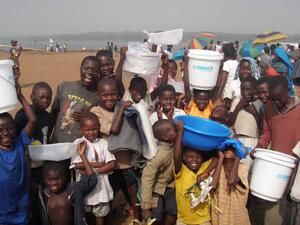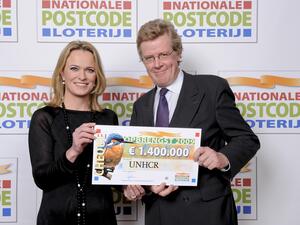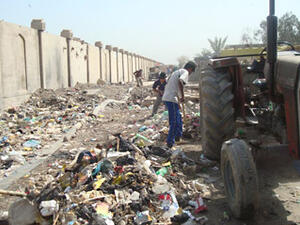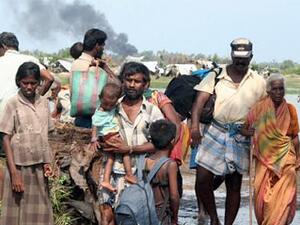New hope for Iraqi refugees in Iran
New hope for Iraqi refugees in Iran
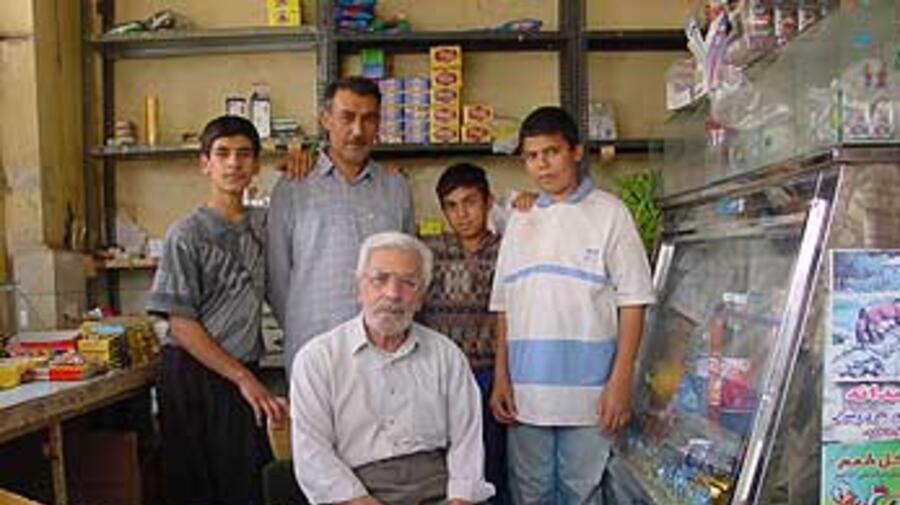
Abdul Razagh (seated) with Ismail Nomani and his family at the latter's shop in Ahwaz. All are Feili Kurds, Iraqi Kurds who were expelled to Iran by Saddam Hussein's regime.
AHWAZ, Iran, April 23 (UNHCR) - The UN refugee agency staff in Iran who have been poised to help possible new Iraqi refugees are all too familiar with the potential problems - after all, they are already assisting millions of existing refugees who had arrived from neighbouring countries over the past three decades.
Even as bombs were falling in Iraq, a voluntary repatriation programme run by UNHCR for some two million Afghans who had fled their country in the years following the 1979 Soviet invasion was already in its second year.
Next, if stability and a welcoming government appear in Baghdad after the fall of Saddam Hussein's regime, UNHCR will be assisting the repatriation of some of the over 200,000 Iraqis who had found safety in Iran from conflicts stretching back to the mid-1970s. More than half of some 400,000 recognised Iraqi refugees worldwide live in Iran.
"We left our country because Saddam was a cruel person who robbed us of our freedom," said Sayeed Abood, a 55-year-old elder in a neighbourhood of Ahwaz, a south-western Iranian city populated almost entirely by Iraqi refugees. "We did not dare to gather even in groups of three people because the security forces would question us."
"I hope to go back now that Saddam is toppled," said the father of eight children, who fled to Iran 20 years ago through the maze of impenetrable marshes where the Tigris and Euphrates rivers meet the Persian Gulf. "Our whole tribe is there. Once we feel it is secure we will return."
Although no Iraqis have so far sought refuge in Iran during this war, Sayeed's experience was part of a history of refugee influxes that meant that UNHCR had to be ready for the worst. For the past few months, the agency has been assisting the Iranian government to prepare four refugee camps along the border and to stockpile supplies in warehouses near the frontier.
The 600,000 Iraqi refugees that UNHCR was ready to assist in Iraq's neighbouring countries may have seemed a lot. But that was less than half the number of Iraqis who fled to Iran alone following the 1991 Gulf War.
Decades of conflict and repression under Saddam have produced a diverse refugee population in Iran.
The first refugees came in the 1970s, especially when Saddam crushed a Kurdish rebellion in northern Iraq after the Shah of Iran agreed to end his support for the Kurds' movement. Many fled Saddam's 1988 offensive, which included the use of chemical weapons against the Kurdish town of Halabja.
The first deportations of the Iraqis known as Feili Kurds also occurred in the 1970s and continued in the 1980s during Saddam's futile invasion of Iran that dragged on for eight bloody years. Among Iraqi refugees, the Feili Kurds present a special problem.
The Feili Kurds - Shiite, unlike the Sunni Muslim faith followed by most - were declared by the regime to be Iranians despite generations of life inside Iraq. Deported to Iran, they have not been accepted by the authorities as Iranians either, leaving them stateless.
Ismail Nomani was an 18-year-old Feili Kurd whose father was taken away soon after the outbreak of the Iran-Iraq war in 1980 on grounds he was an Iranian, despite family records in Iraq going back 120 years. In less than an hour police returned and took the whole family for deportation.
"I remember it was raining heavily and there was shelling," Ismail, who now runs a shop in Ahwaz, said of the day his family was pushed out of Iraq. "They led us out of the town and showed us the way to the Iranian lines. We walked for eight hours. The Iranians embraced us."
That war also started an exodus to Iran of Arab refugees, mostly Shias from the southern and central provinces of Iraq. It culminated in the mass movement over the border of 1.3 million Iraqis immediately after the 1991 Gulf War, when Saddam ruthlessly crushed rebellions against his rule in southern Iraq.
Each inflow of refugees to Iran was followed by return movements: some almost total, others involving only a few people. Now, along with the prospect of a new government in Baghdad for the first time since the refugee problem began, comes the possibility that the remaining refugees can go home.
When the latest war in Iraq started, Iran was hosting 204,000 Iraqi refugees who had been registered by the government in 2001, 90 percent of them in the 10 western provinces of Iran. Just under 46,000 Iraqis live in 22 government-run refugee camps.
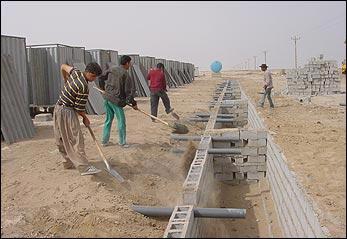
Workers for the Iranian government, assisted by UNHCR, preparing latrines at Yazde-no, near Ahwaz, for possible new refugees from Iraq.
But most refugees live in cities, like Abdul Razagh, a 65-year-old Feili Kurd who lives in the oil industry centre of Ahwaz, 125 km north-east of the battered Iraqi city of Basra.
Abdul saw the most productive years of his working life disappear when he was taken from the school where he taught economics, and pushed across the border just before the start of the Iran-Iraq war. He is anxious to go back and has asked for UNHCR help to repatriate.
"For sure, after this long period, things have changed there," he said. "But we are sure we will be welcomed because we were deported unfairly. All our relatives and friends are there."


